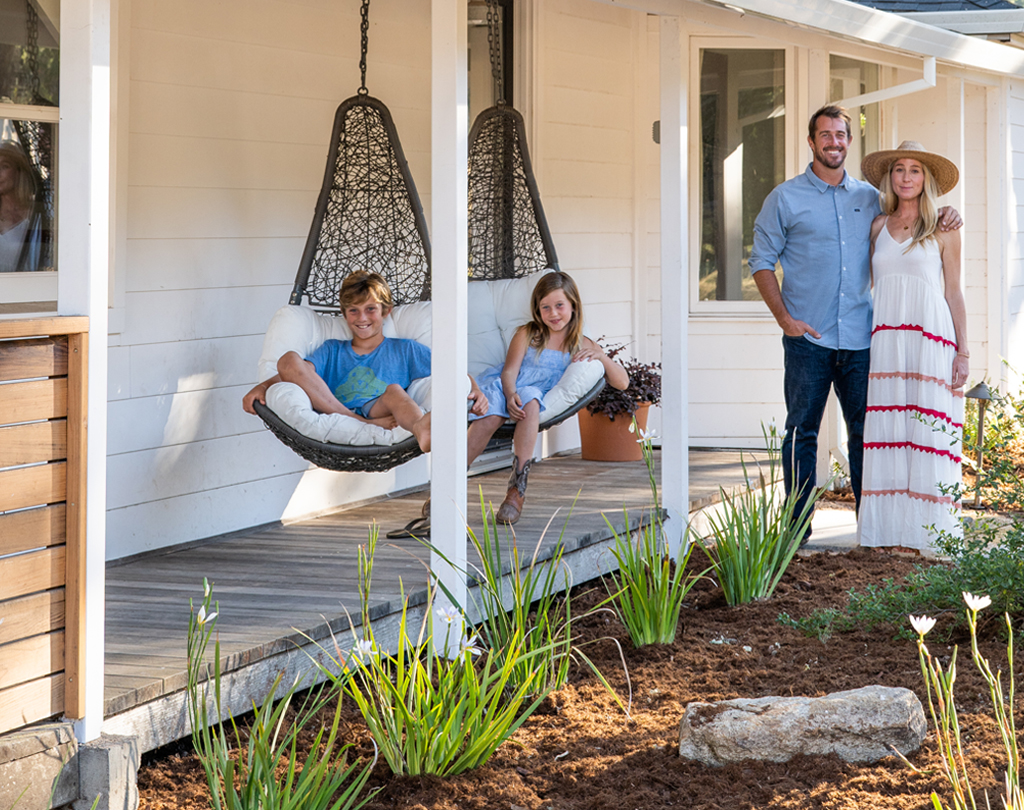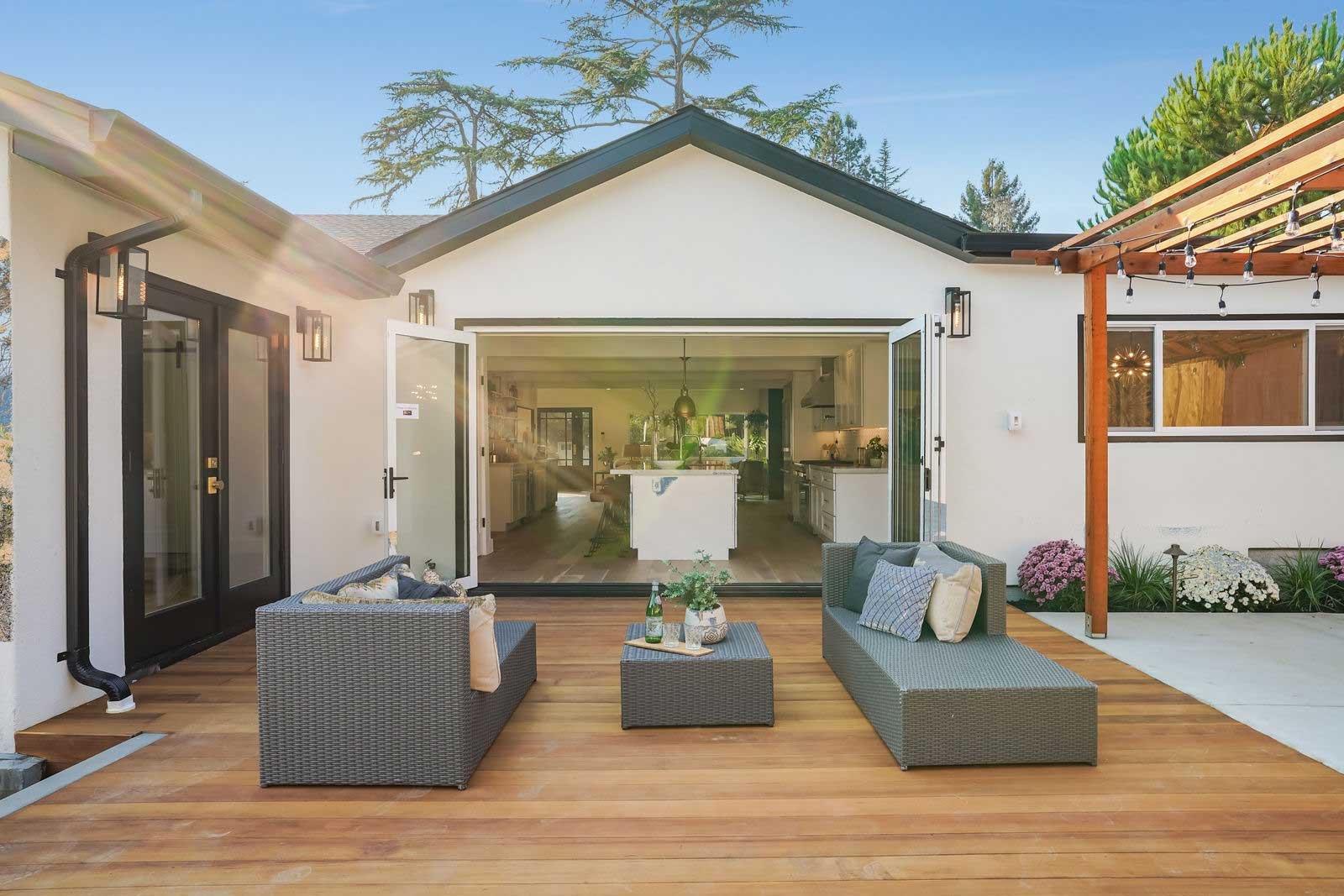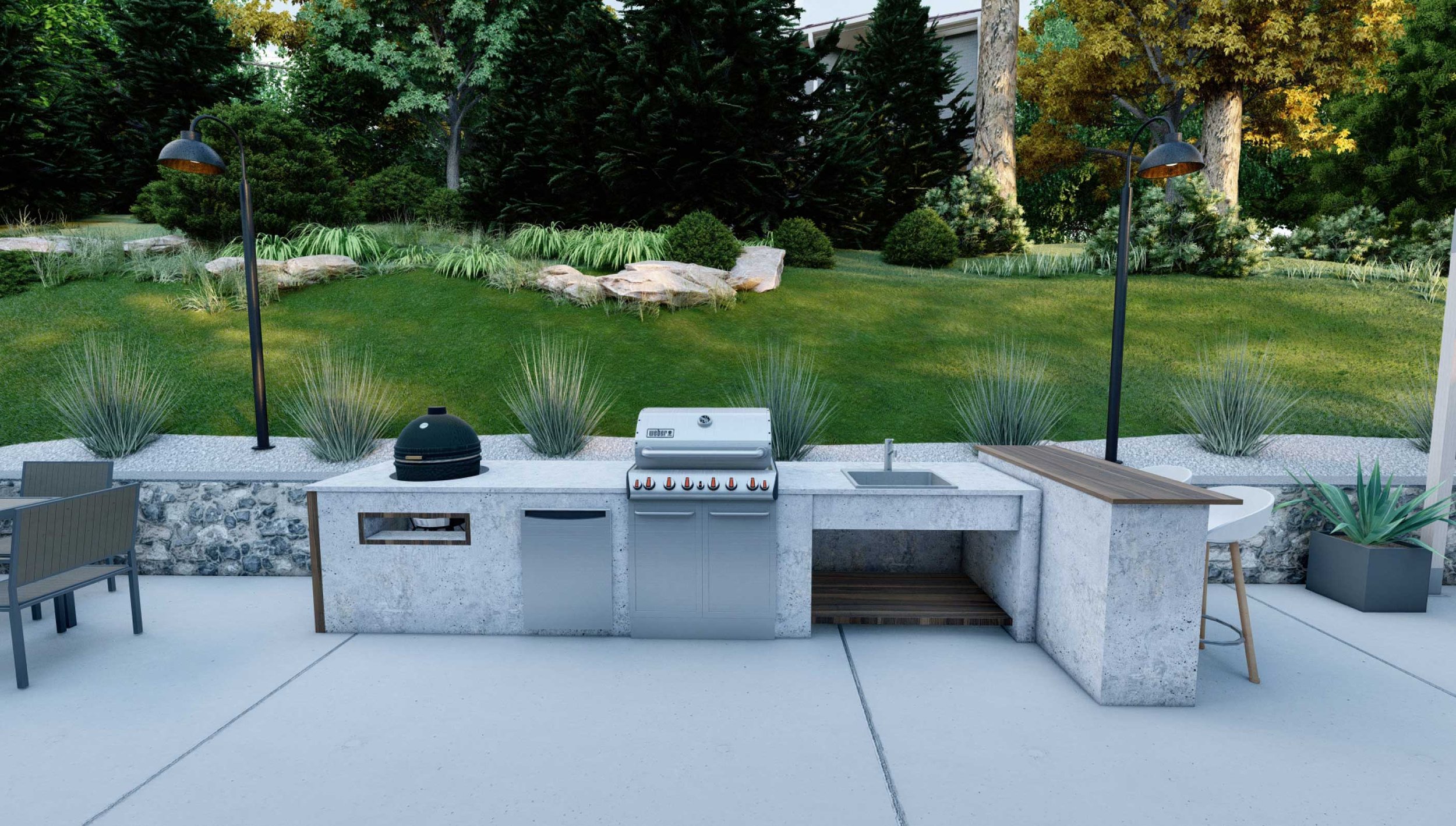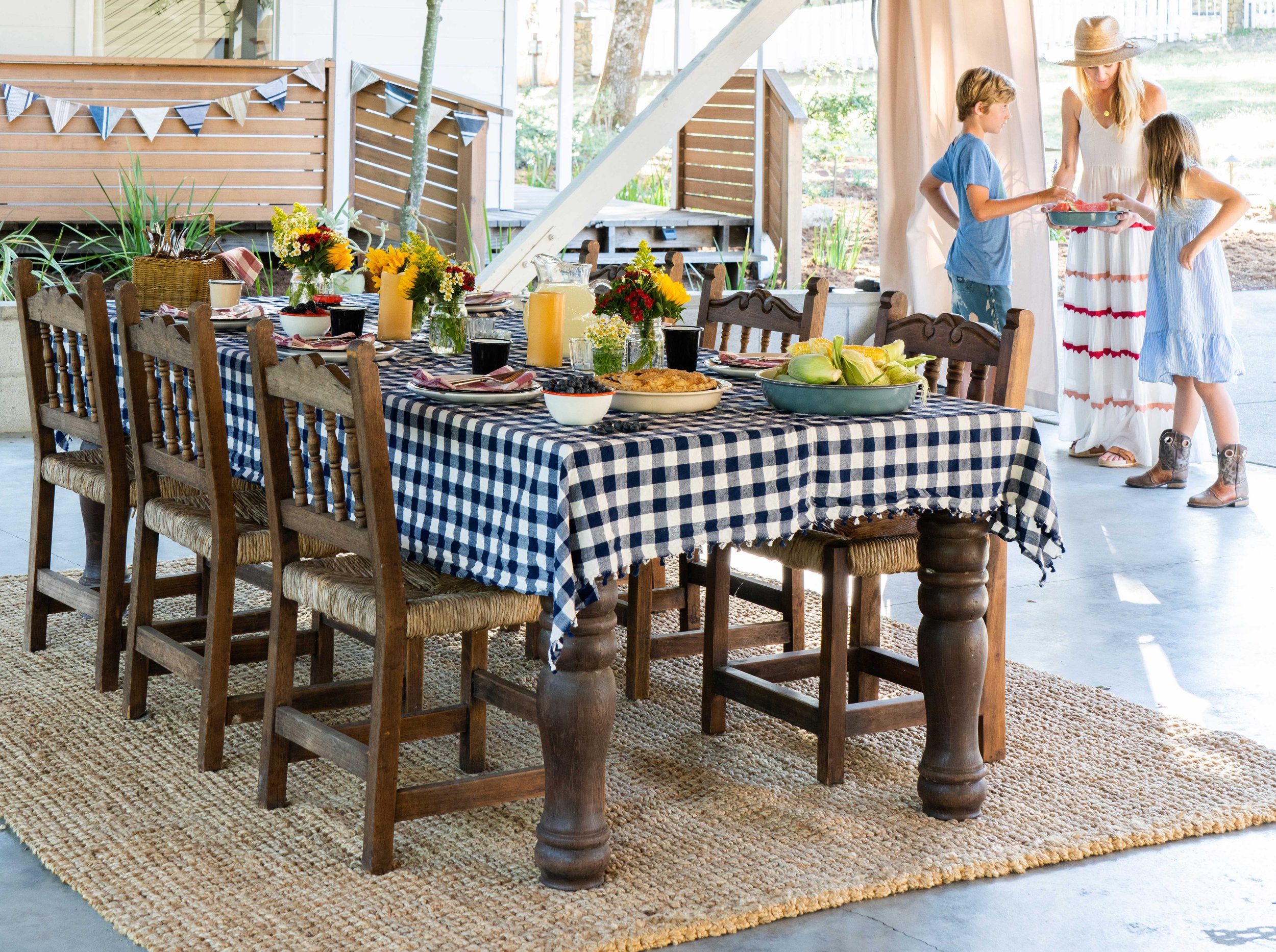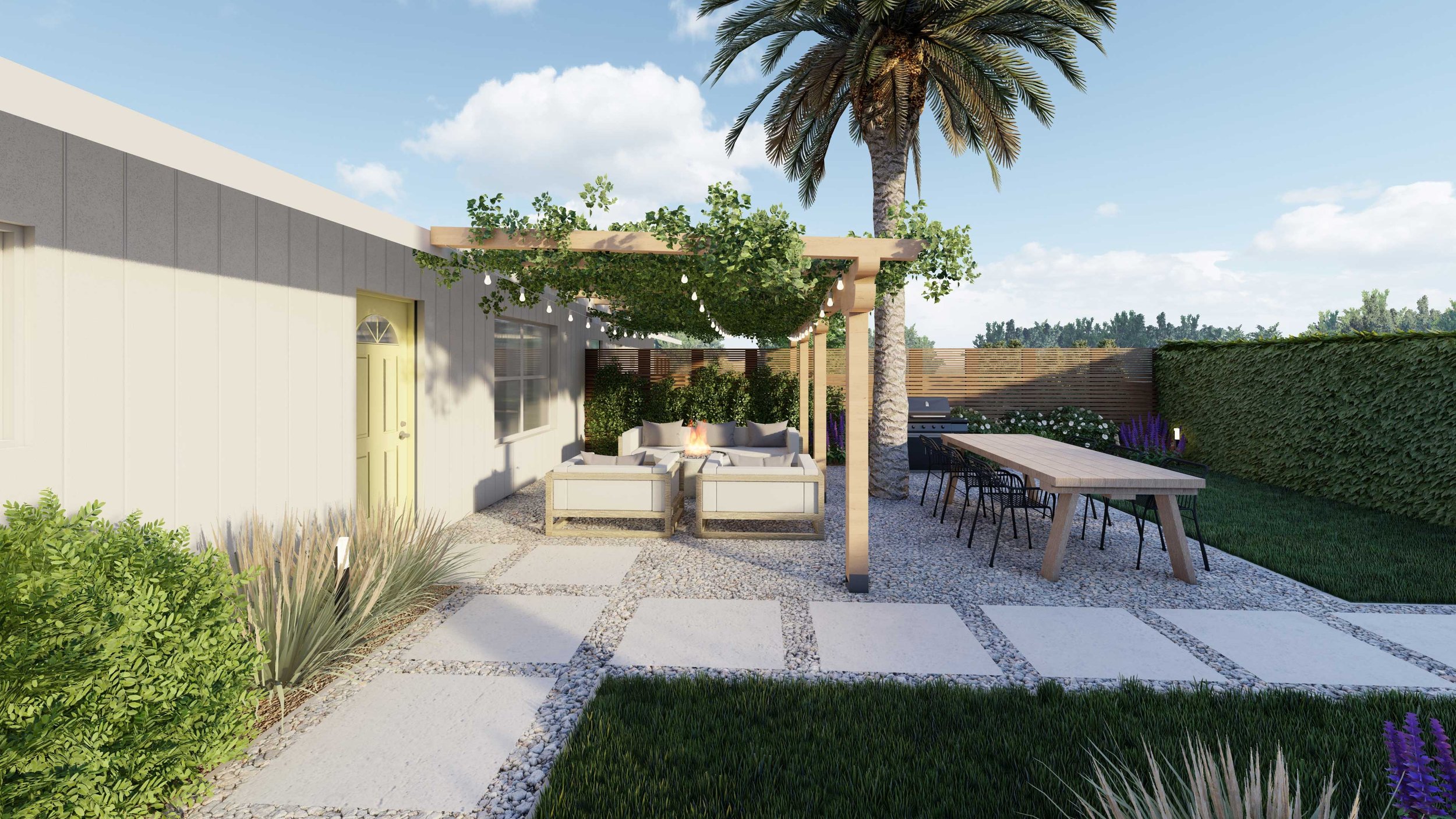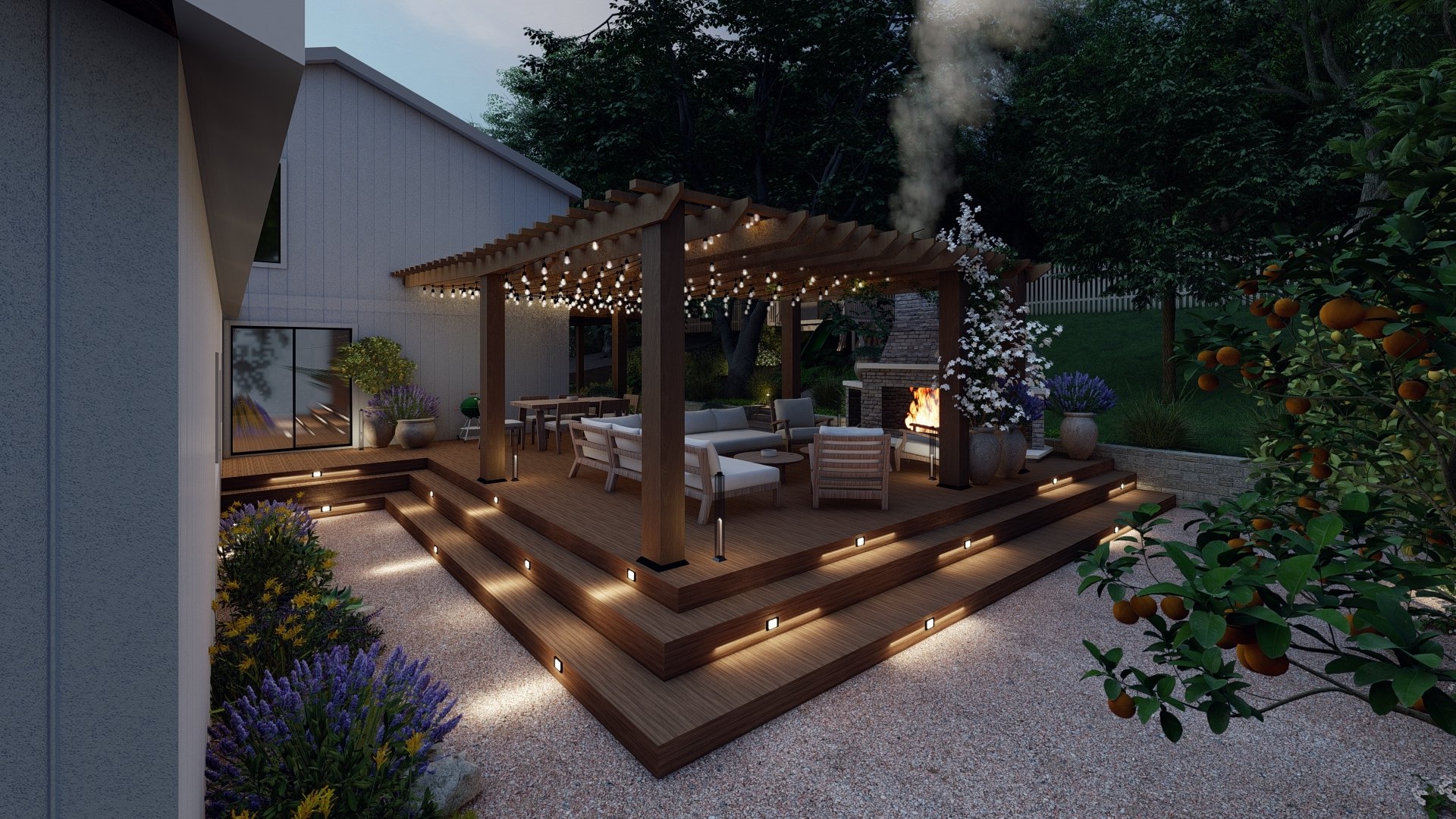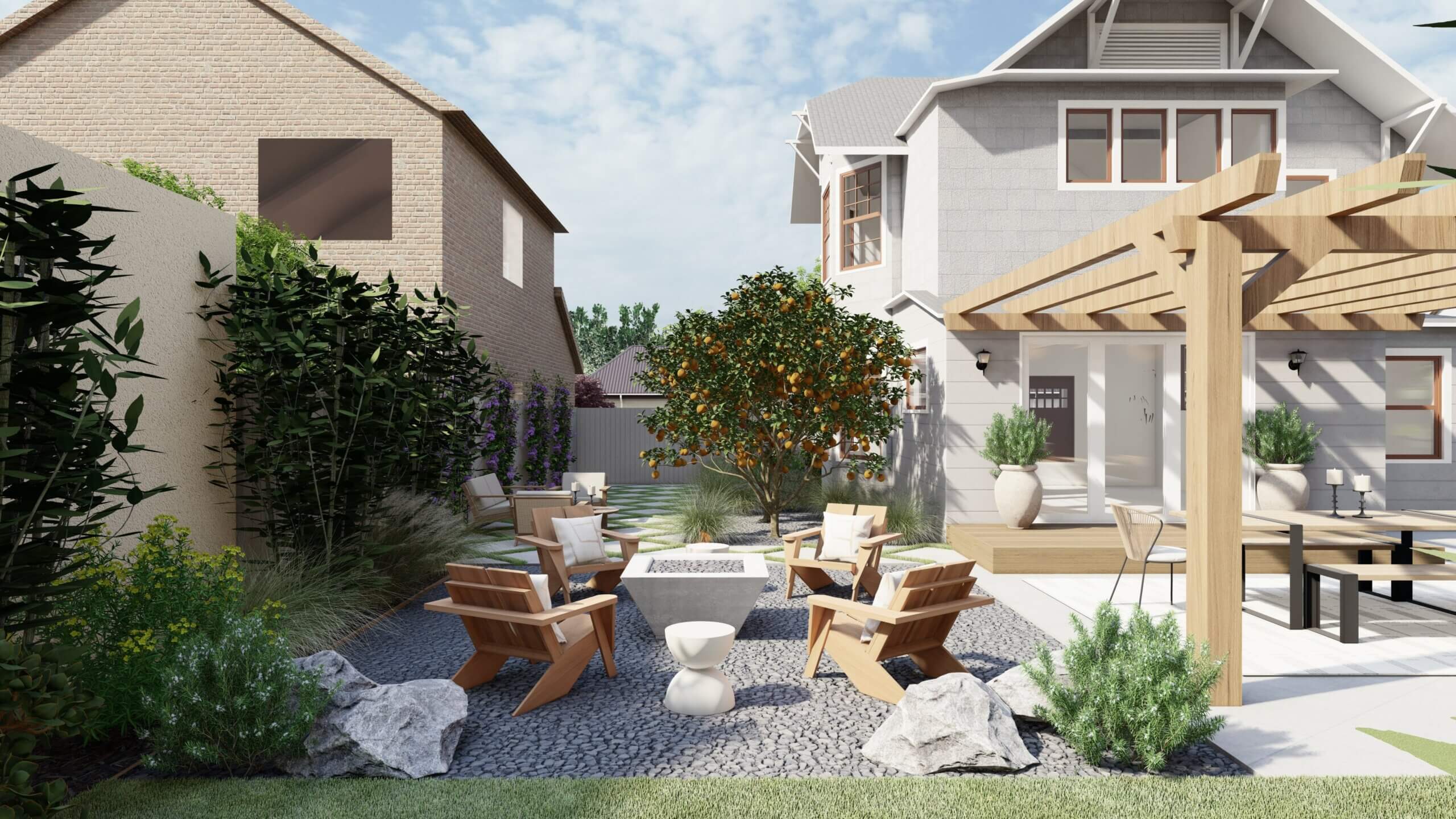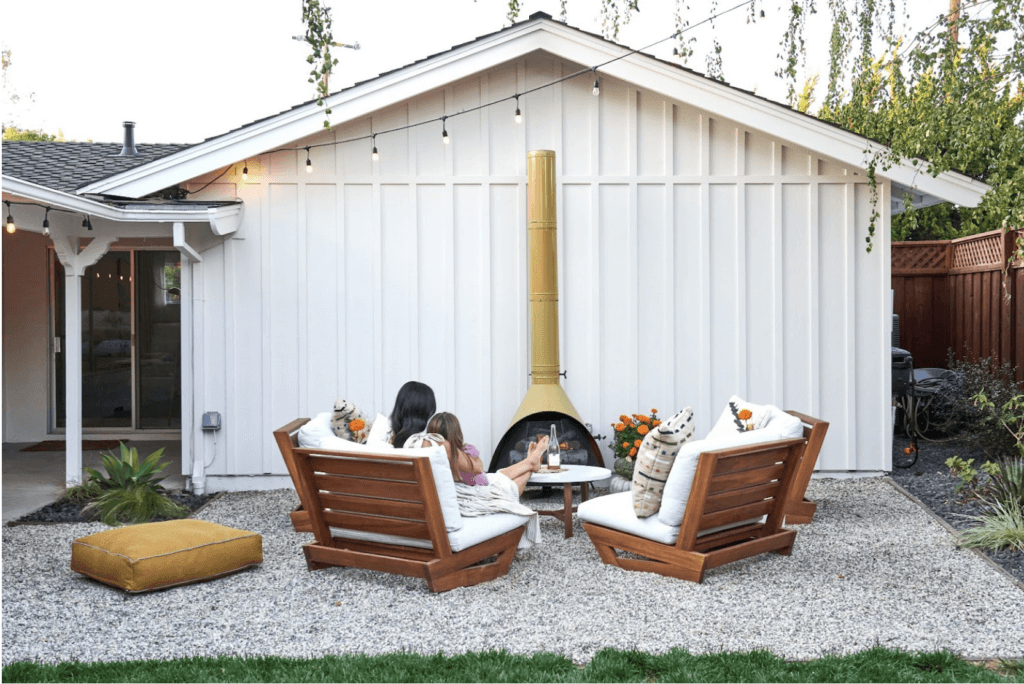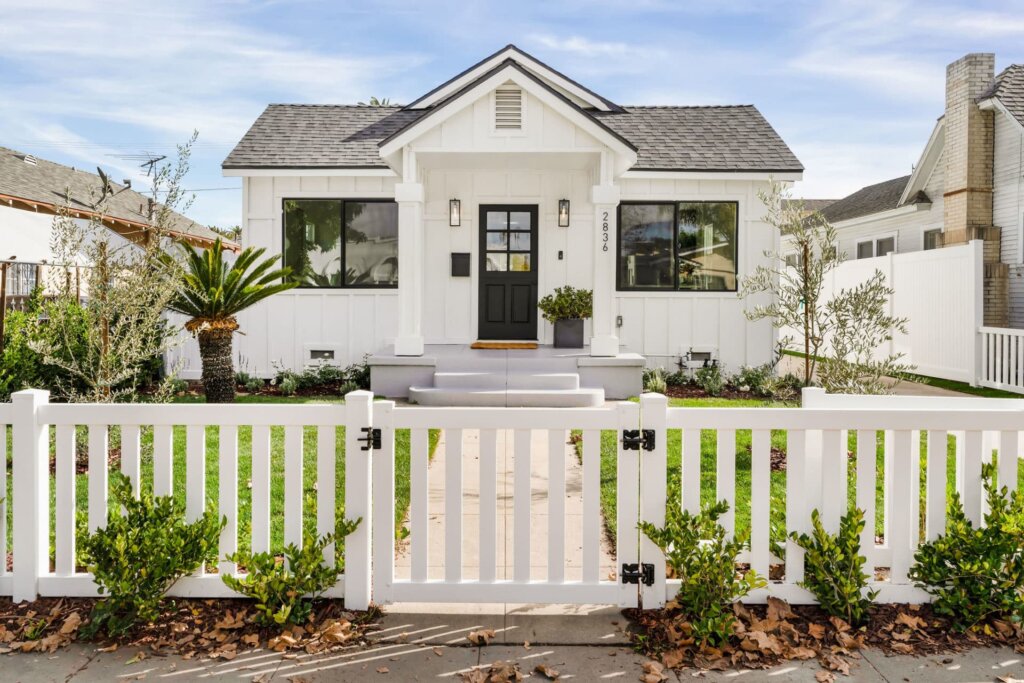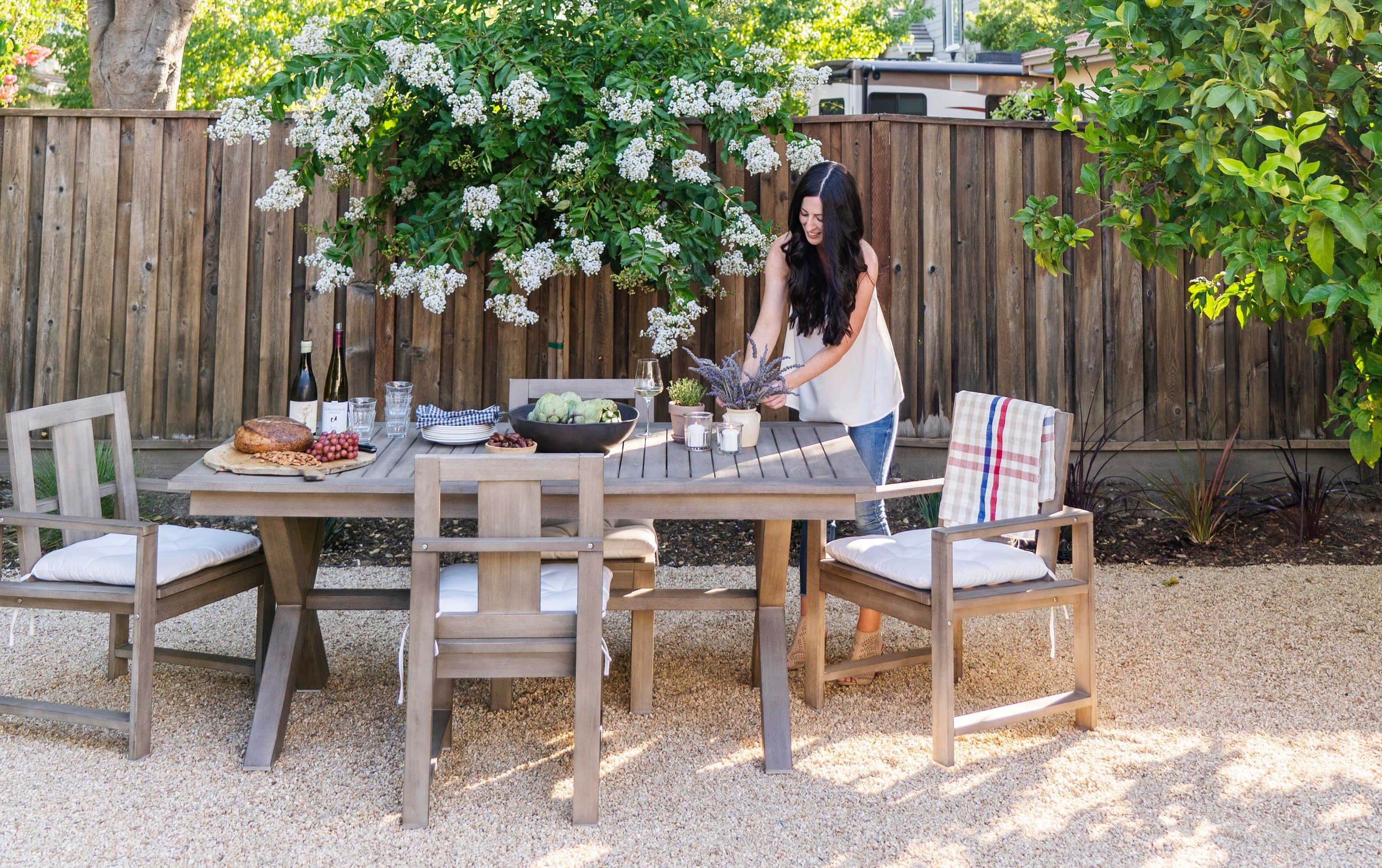
Few things are more pleasant than an evening outside with friends and loved ones. Perhaps this is why outdoor entertainment areas are among the most frequent design requests we receive.
To get your yard ready to host, we’ll walk through some key strategies for designing spaces for entertaining.
BIG PICTURE
Let’s begin with the big ideas. First, what are we talking about when we refer to entertaining guests? You could be cooking, dining, having cocktails or coffee, playing games, enjoying an outdoor movie, or just having a chat. The group could be small, or big. The common thread is people gathering in a single space.
How do we best accommodate groups big and small doing a variety of things?
There are three overarching goals to pursue:
Create a space that is functional
Create a space that is inviting
Create a space that is practical
Let’s take a look at each.
Flexible patio space in Huntington Beach, CA can quickly transform to accommodate more guests
CREATE A FUNCTIONAL SPACE: FLEXIBLE USE
A design that accommodates a variety of activities offers you the most versatility and value. For small yards or yards with limited usable space, designing for flexibility is particularly important.
When designing entertainment areas for flexible use, consider both hosting and non-hosting functions. Entertaining may be the primary goal of the space, but for the many days when you don’t throw an outdoor party, your entertainment area should double a resource for day-to-day needs.
Larger yards, coupled with larger budgets, may make it possible to provide multiple areas for entertaining. This can relieve pressure from your design – one space won’t need to handle every functional need.
If you are designing multiple entertainment areas, make sure each one offers a distinct experience – there’s no sense in providing redundant spaces, make sure each one has something unique to offer.
How do we design for flexibility?
MINIMIZED BARRIERS
Free-flowing circulation and movable furniture allow people to gather in virtually any configuration, and help a space absorb groups of different sizes.
Avoid built-in planters and seating, or, position them along walls where they do not block circulation or divide up floor space.
OPEN EDGES
Use plant containers or decorative objects to punctuate corners and thresholds, but keep boundaries pretty open. This fosters a sense of connection with the surrounding yard, and allows for overflow into adjacent spaces when groups get larger.
SIGHT LINES
Establish clear views to link your entertainment space to the far reaches of your yard. Long sight lines make spaces feel larger, and in turn more comfortable for larger gatherings.
IMPLIED SPACES
Use furniture arrangements to imply spaces, rather than wrapping spaces in boundaries. A cafe table and chairs tucked in the corner creates a distinct nook within a larger patio, but can be cleared away when a bigger space is required.
Choose and arrange furniture to suit the gathering size you most often expect to host (factor in daily needs, too). For bigger or smaller events, rearrange furniture to imply spaces suitable to the group size.
Use groundcover materials like paving or aggregates to establish adjacent, modestly-sized zones suitable for smaller gatherings. When you need a bigger area, you rearrange furnishings to imply a merging of different groundcover zones into a single functional area. If all zones are at the same elevation and have clear, shared edges, this trick will be easier to pull off.
Modern outdoor kitchen with built-in gas grill, charcoal grill, sink, and mini fridge in Millburn, New Jersey back yard design
KITCHENS
When budget and space allow, an outdoor kitchen can be a great addition to an outdoor entertainment area. It’s convenient to keep a kitchen at the periphery of a gathering space (and near the indoor kitchen), and nice to keep those working the grill close enough to chat with other guests while they cook.
The trouble is that kitchens are fixed and massive – they’re effectively thick walls – and can negatively impact the flexibility of a space. As with built-in planters and seating, try to keep kitchens from sub-dividing spaces or closing off edges.
The risk of designing for flexibility is blandness. By not committing to a singular function, a space runs the risk of not offering much character. Let’s explore how to avoid this pitfall.
CREATE AN INVITING SPACE: THE LOOK & FEEL
An entertainment area only succeeds if people want to spend time in it. If it’s not inviting, it won’t be used, and it becomes a waste of space. To be inviting, your space needs to look and feel good.
Outdoor fire pit with seating near a pergola covered outdoor kitchen and lounge area in California back yard design
How do we manipulate look and feel?
SCALE
Size entertainment areas appropriately. Spaces that are too big inhibit intimacy, and make people feel uncomfortably small.
Spaces that are too small are loud and crowded – there may not be room to set down a drink or kick up your feet. Design spaces to comfortably fit a group, leaving them feeling neither dwarfed nor cramped by the dimensions.
Pergola covered in white creeping roses creates a cozy and beautiful outdoor fire pit area in Oklahoma back yard design
ENCLOSURE
Consider the spectrum of enclosure: on one end is openness and connection with the surrounding yard, on the other is enclosure and seclusion from the yard.
Open boundaries, long sight lines, and minimized barriers – principles of flexible use – make spaces feel more open and connected. Especially in small yards, pursuing openness through these practices is a good default choice.
This being said, if coziness is your aim, consider a more enclosed space.
Spaces with a high sense of enclosure are typically smaller, and edged by elements that create a sense of isolation from the surrounding yard, typically by blocking views. These are spaces for quiet conversation or refuge from the crowd. (They also perform well as reading nooks or outdoor offices when not in hosting mode.)
One or two walls can be useful to achieve enclosure, but don’t fully wrap a space with structure – you’ll end up with a cell.
Instead, use planting to achieve enclosure. Where walls are fully opaque, plants can be manipulated to achieve a desired level of isolation. Low canopy trees can offer a less intense sense of enclosure than hedges – the view at trunk height is only partially obstructed by tree canopy, but fully obscured by a dense hedge. Layered ornamental planting that tops out with tall, airy grasses or spacious perennials will land you somewhere between the openness of trees and the density of hedges.
Space and budget allowing, a design would ideally include spaces with varying character – some that offer openness, others that offer enclosure.
Italian cypress, Goodwin Creek gray lavender, and waxleaf privet surround an outdoor dining area in Austin, Texas
STYLE
There is no one inviting style. Choose the style you like and commit to it throughout the yard. Whatever your look may be, you can express it through a few key indicators:
The form of spaces and edges can imply either modern or traditional aesthetics. In general, long, graceful curves lean traditional, while straight lines and sharp angles skew modern.
Pro Tip → avoid tight, wavy edges. They aren’t particularly attractive, and limit the functionality of edges.
Planting design around and within entertaining areas influences their feel.
We could write several posts about planting design – for now, we’ll stick to a few general suggestions:
Create a more modern feel by using plants with few or no flowers. Emphasize differences in plant height, texture and foliage color. Lean on structure to imply formality (rigid, geometric rows) or informality (wild, amorphous masses framed by crisp hardscape edges).
For a less modern feel, use elements that signal different flavors of traditional planting. Consider sculpted hedges, monolithic rows of chunky flowers like roses or Hydrangeas, or highly mixed, heavily floral designs reminiscent of cottage gardens. More color = less modern.
Planting style is not about single species, but about the relationships between species and how plants are placed. Let your designer know the style you’re after, and they’ll craft a planting design to achieve it.
Wood pergola shades an outdoor seating area with fire pit near an open air dining table with seating in Naples, Florida back yard design
MATERIALS
Landscape materials like paving, mulch, stone, and wood all impact the look and feel of a space. Rough materials yield a casual feel. Fancy materials create an upscale vibe. Think of the difference between spaces paved with decomposed granite, weathered brick, saltillo tiles, and cut stone – the impact on spatial character is significant.
Before you work with a designer, it’s worthwhile to browse inspiration images to see what catches your eye. Sharing visual references will help your designer hit your style goals.
FURNISHINGS & DECORATIVE ELEMENTS
What we’ve said of materials also applies to seating, tables, plant containers, and other elements used to furnish and decorate a space. The elements you chose will greatly impact the overall feel of your space. Take time up front to find and share examples that express the style you hope to achieve.
CREATE A PRACTICAL SPACE: FACILITATE USE
If look and feel are the lure to bring people to an entertainment space, practical function is the hook that keeps them there. If spaces don’t perform functionally, they won’t be used.
Don’t forget to consider the following when designing your entertainment areas:
How do we DESIGN A SPACE THAT’S USABLE?
FURNISHING & DECORATIVE ELEMENTS
Not only does the style of your furnishings matter, their performance should be considered. To achieve the goals of an entertainment space, furnishings should look good, feel good, and withstand the rigors of life outside.
For flexible entertainment spaces, at least some furniture should also be portable. A few immobile pieces can be ok – say a couch along the periphery that doesn’t impact flow – but at least some pieces should be easy to move to allow for temporary changes of furniture layout.
CLIMATE
Heaters, ceiling fans, shade structures, windscreens, and even baskets with warm blankets are all highly practical – and sometimes critical – adaptations to make outdoor spaces comfortable enough to spend time in.
Whether it’s heat, cold, wind, rain or snow you have to contend with, incorporate the necessary measures to make your entertaining area usable for as much of the year as possible. Comfort is critical to ensuring a space gets used.
Outdoor movie theatre with retractable screen in Phoenix, Arizona back yard design
MOUNTING INFRASTRUCTURE
For climate adaptations like shade sails, windscreens, fans or heaters, as well as for lighting or even outdoor TVs, it’s useful to have something tall to hang things from.
Overhead structures like pergolas can be a good solution. They establish distinct spaces, yet their open sides keep circulation clear and connections to surrounding areas strong.
LIGHTING
Entertaining often happens at night, so you’d better make sure your entertaining areas are lit. Use path and deck lights to direct light downward – you want to avoid uplights near paths or seating areas.
Instead, use uplights on focal trees or structures to lend drama to key views from your entertaining areas.
If you need lighting on the cheap, try simple LED string lights mounted to existing tall structures. Less is more with string lights – they may look good at night, but they look like power lines during the day, so try to keep them inconspicuous.
Pro Tip → Turn your lighting off when you are done entertaining. Lights left on all night are harmful to local ecosystems.
Custom outdoor fireplace under a pergola created the perfect evening entertaining space in Novato, CA
SITING & ACCESS
Spaces get more use when they are easy to access. Often, this means keeping them near the house for quick access to the kitchen and restrooms.
It also means siting entertainment areas in locations that don’t require steep climbs or other accessibility challenges. Perhaps the view atop a steep slope would merit a secondary hangout zone, but primary entertainment areas should be located in areas that adults, toddlers, and grandparents can all access with ease.
Pro Tip → Try to create outdoor spaces that feel like a continuation of indoor areas. Not only will accessibility be simple, you’ll expand the perceived size of your entertainment area by merging the indoors with the outdoors.
CREATING A SOCIAL YARD DESIGN TAILORED TO YOUR NEEDS
Yardzen’s award-winning online exterior and landscape design service is tailored to homeowners with both large and small yards in all fifty states in the U.S. Our design process begins with understanding your outdoor space, style, garden ideas, and a discussion of your budget and vision to minimize surprises when it comes time to build.
Our top-notch designers then develop a personalized vision for your yard, shared through 3D renderings, 2D plan drawings, and plant and material lists. Your design will capture the look, feel, and function you are hoping for, all while keeping costs within range.
Once your design is complete, we’ll help you connect with a local contractor from our Pro Network of vetted professional contractors to install your new design (if you don’t plan on a diy build).
Ready to bring your design ideas to life? Create your design profile or explore our professional exterior, side yard, front yard, and back yard landscaping design packages today!
Featured Articles
How an Interior Designer Created “Outdoor Rooms” in Her Yardzen Yard

The Best Outdoor Cold Plunge Tubs & Ice Baths in 2024 (Chosen by Our Client...

Our Dreamiest Plunge Pool Yard Designs
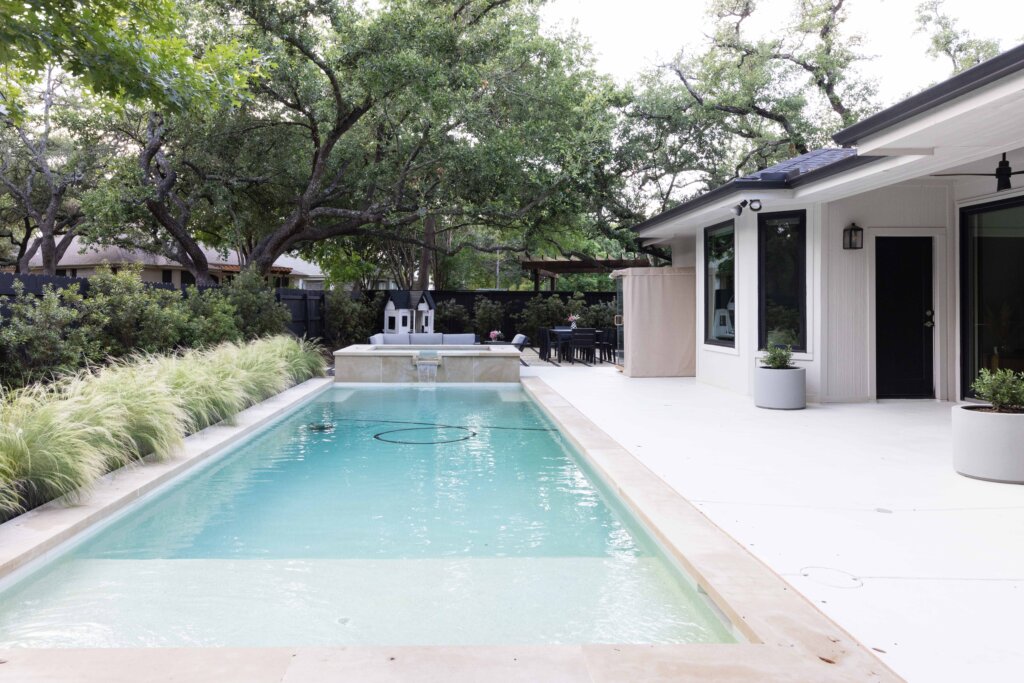
Our Favorite No-Grass Front Yard Ideas

